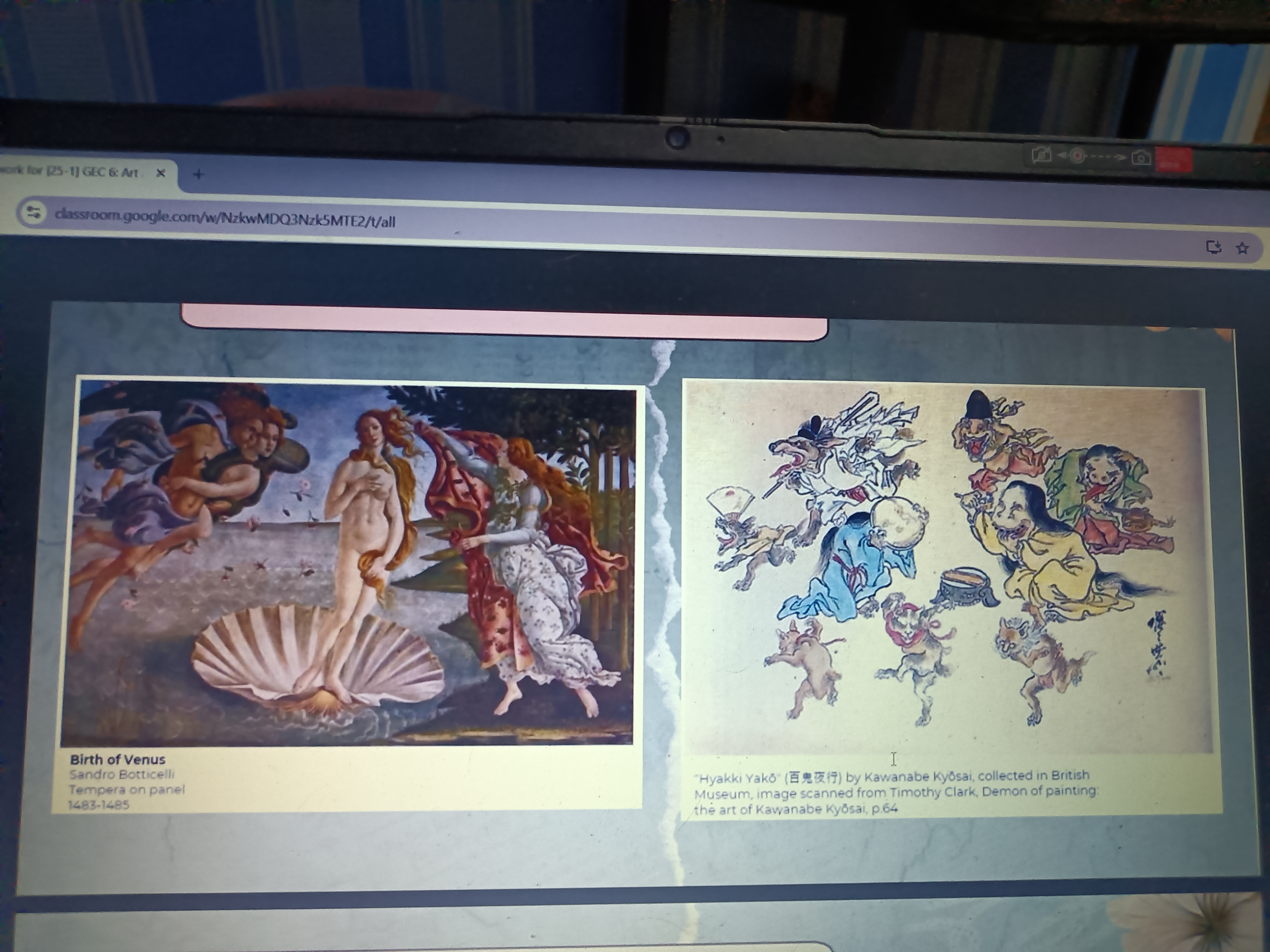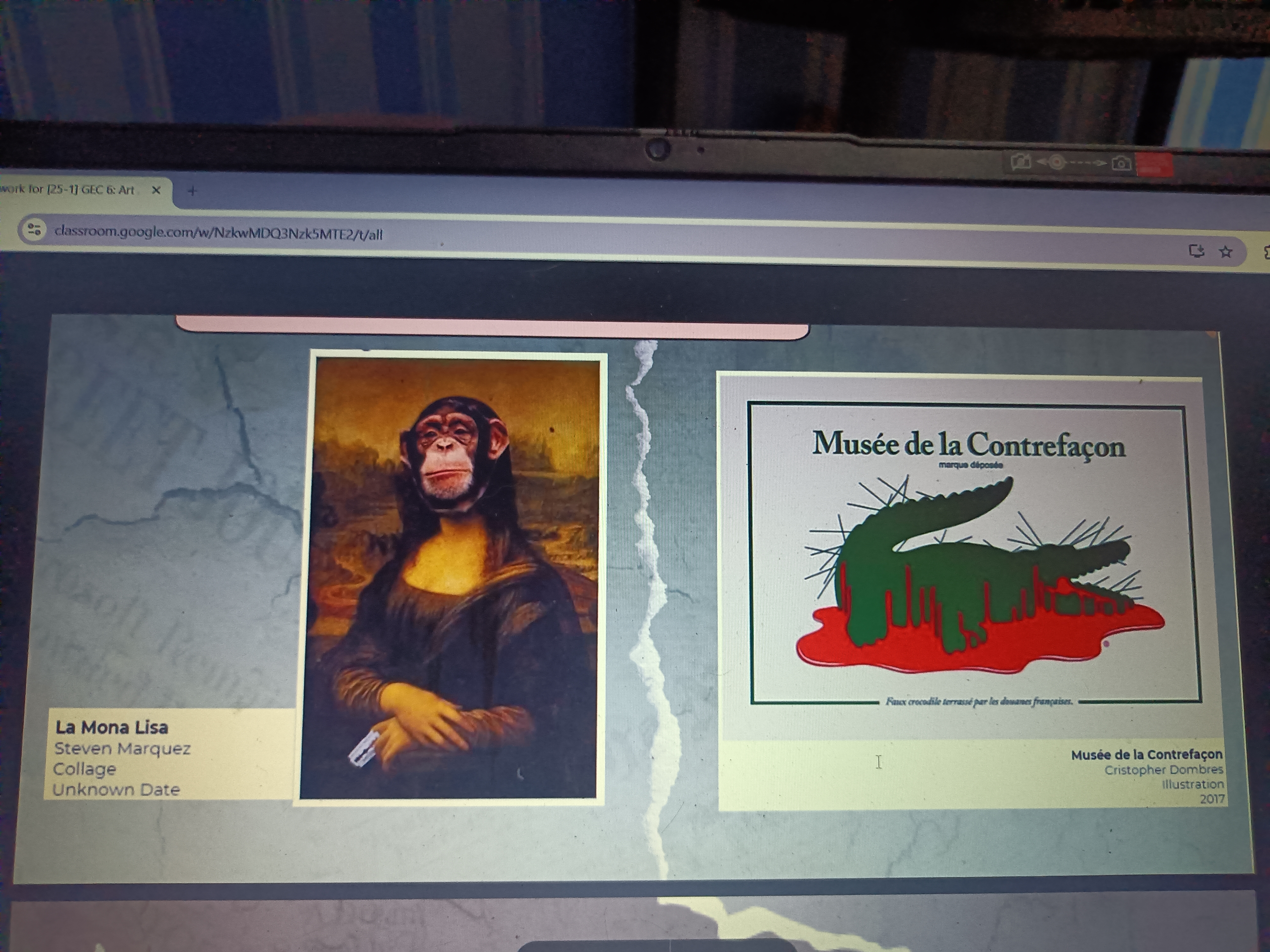art app - subject and content
1/35
There's no tags or description
Looks like no tags are added yet.
Name | Mastery | Learn | Test | Matching | Spaced |
|---|
No study sessions yet.
36 Terms
the core concept or focus of an art
Is any person, animal, thing, or issue that is described or represented in a work.
Subject (Ortiz, Erestain, Guillermo, Montano, Pilar 1976)
Have subject
Use identifiable objects or symbols
Also called objective arts
Representational arts
do not have subject
do not represent descriptions, stories or reference to identifiable objects or symbols
also called non-objective arts
non-representational arts
Sources of Subjects
nature
historical events
mythologies
traditions
historical texts
other work of arts

Nature

Historical events

Mythologies

Traditions

Historical texts

Other works of art
Kinds of subject
Landscapes
Seascapes
Cityscapes
Still Life
Animals
Portraits
Figures
Everyday Life
Legend and history
Religion and Mythology
Dreams and Fantasies

Landscapes

Seascapes

Cityscapes

Still life

Animals

Portraits

Figures

Everday life

Legend and history

Religion and mythology

Dreams and fantasies
communicated by the artist or the artwork
Content/meaning
According to Clever (1966), there are three different levels of meaning that a subject matter may acquire:
Factual meaning
Conventional meaning
Subjective meaning
Literal statement or the narrative content in the work which can be directly understood because the objects presented are easily recognized.
Factual meaning
Special meaning that a certain object or color has for a particular culture or group of people
Conventional meaning
Any personal meaning consciously or unconsciously conveyed by the artist using private symbolism which stems from his own associations of certain objects, actions, or colors from past experiences.
Subjective meaning
A discipline of the arts that seems to be both healthy and dying. the analysis and evaluation of arts.
Art criticism
Methods in reading art
formalism and style
Iconography
Contextual approaches
Biography and autobiography
Semiotics
Psychoanalysis
Aesthetic and psychoanalysis
Basically gives importance to the formal qualities (art elements, materials, and design principles) as basis for the meaning of art. Roger Fry is a major purveyor of this thinking.
Formalism and style
Focuses on the subject matter primarily over form.
Answer questions like:
Who is this person the artist painted and what does it represent?
Why did the artist choose this image and what for?
Iconography
From the term itself, context becomes an important factor in criticizing artworks here. We can take many approaches to contexts like Marxism, Orientalism, Colonialism, Racial Iconography, Feminism, and Gender.
Contextual approaches
Considers the life and context of the artist. This approach is based on the assumption that the artist's life, beliefs, choices, and personality are directly connected to the works that he or she creates.
Biography and autobiography
From the Greek word "sema" which means sign. Hence, an artwork or art form is assumed to be composed of a set of signs that may have significant cultural and contextual meanings beyond itself.
Semiotics
one is concerned about the unconscious mind in relation to the artist, the viewer, and the cultural context it is involved in.
Psychoanalysis
Individual notion of what is considered acceptable, beautiful, or attractive in works of art are in part influenced by psychological factors. This approach then connects psychology to one's constructed philosophy of art.
Aesthetic and Psychoanalysis